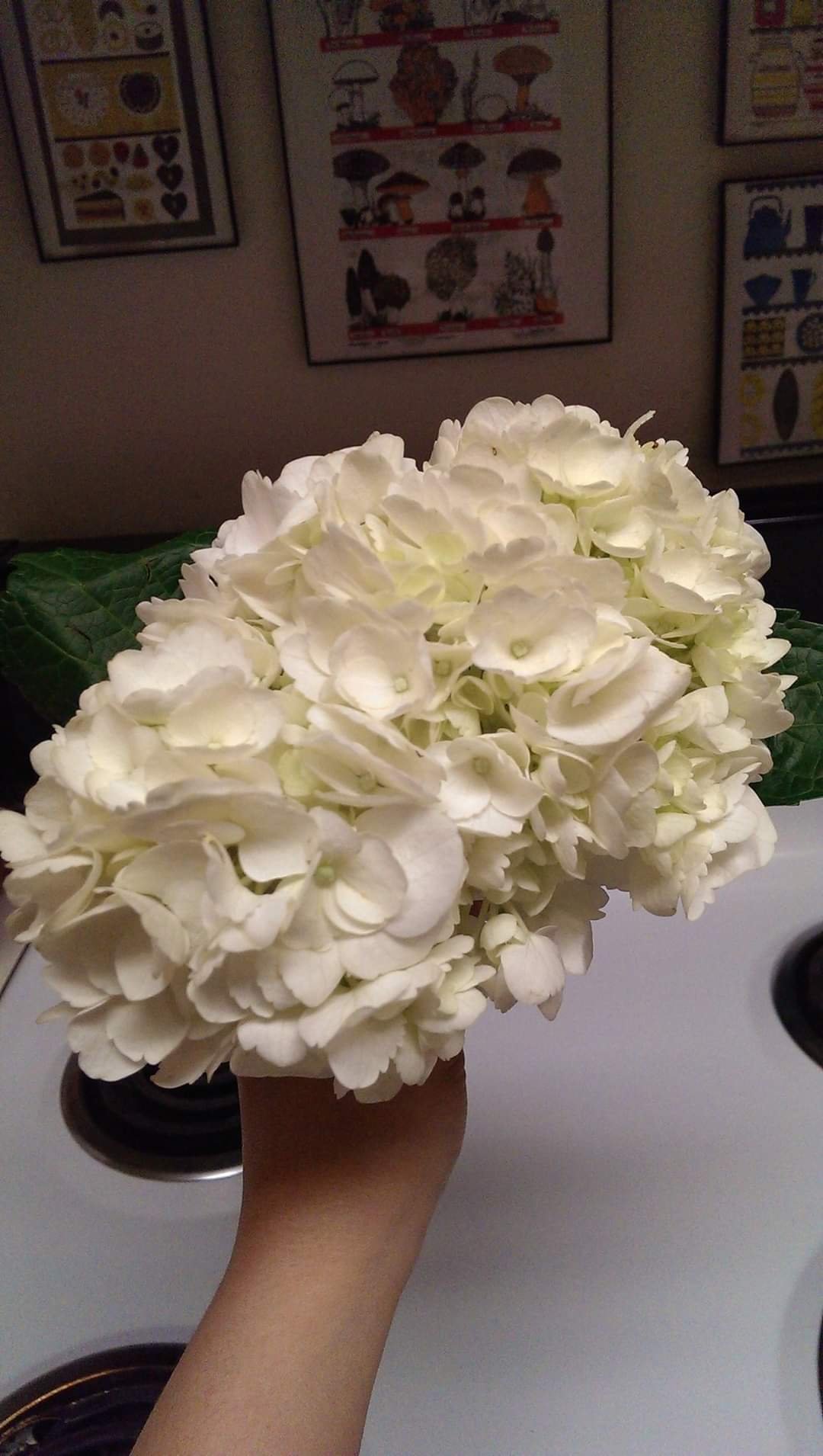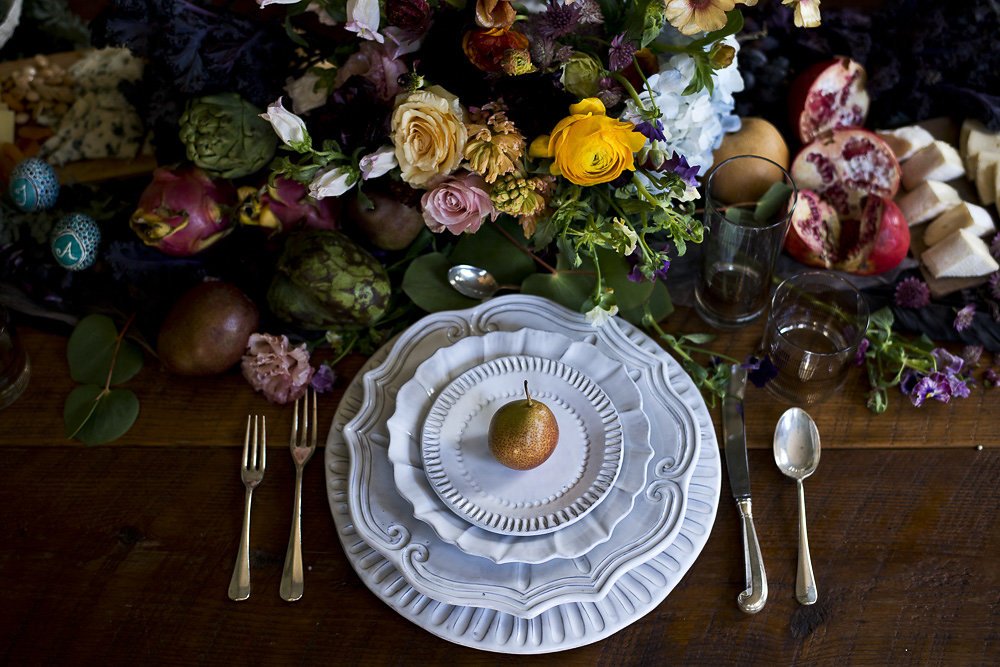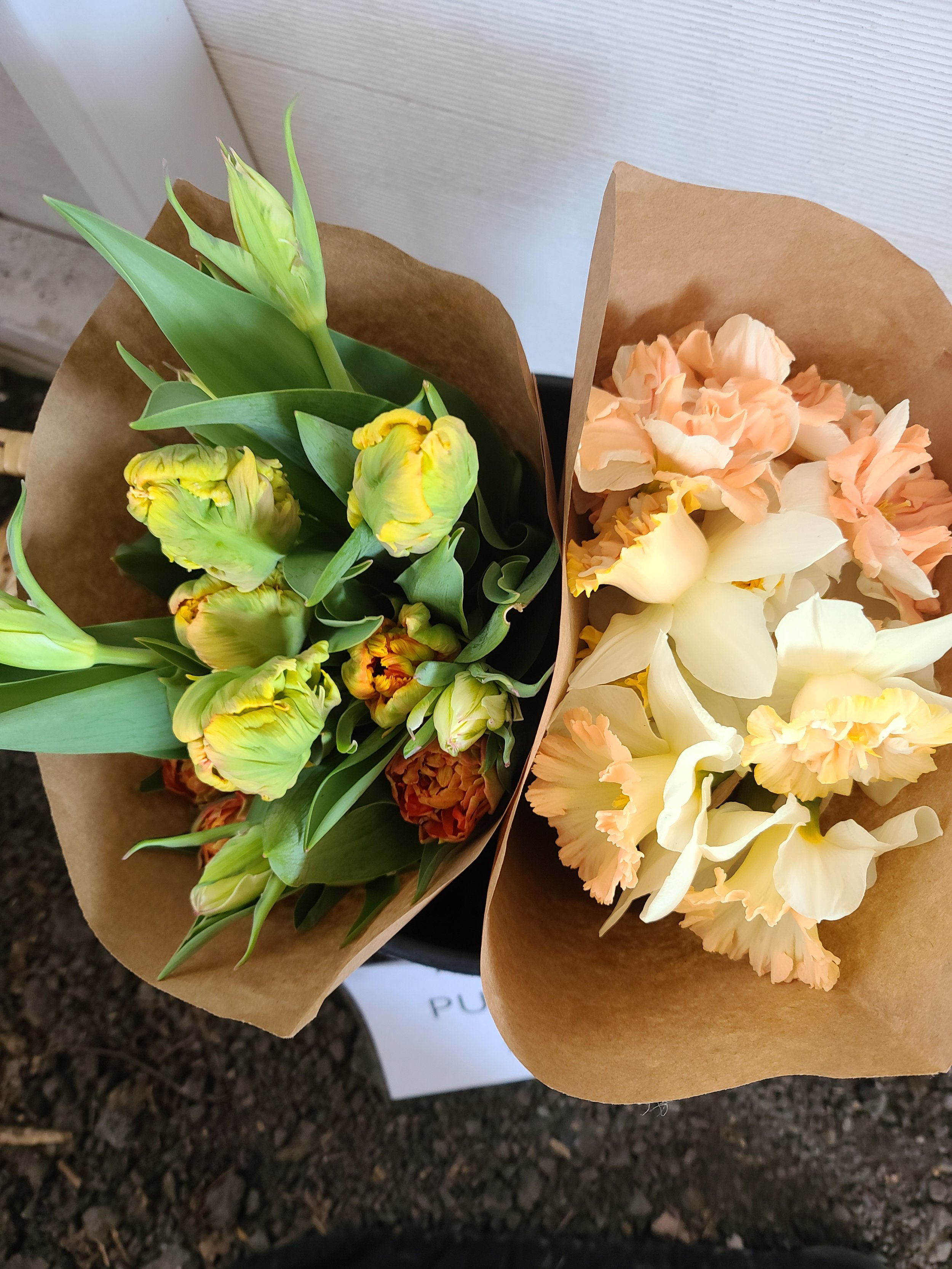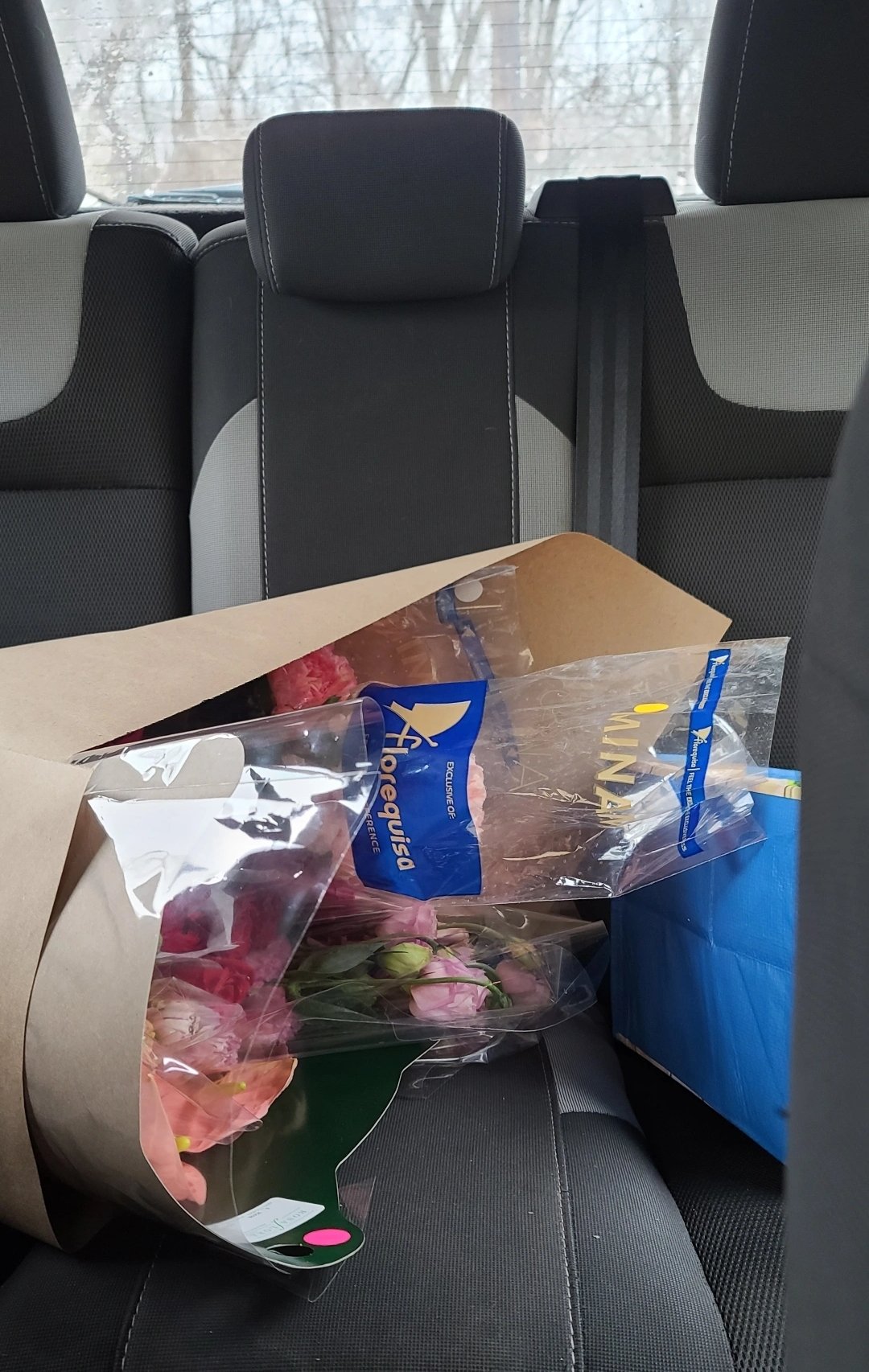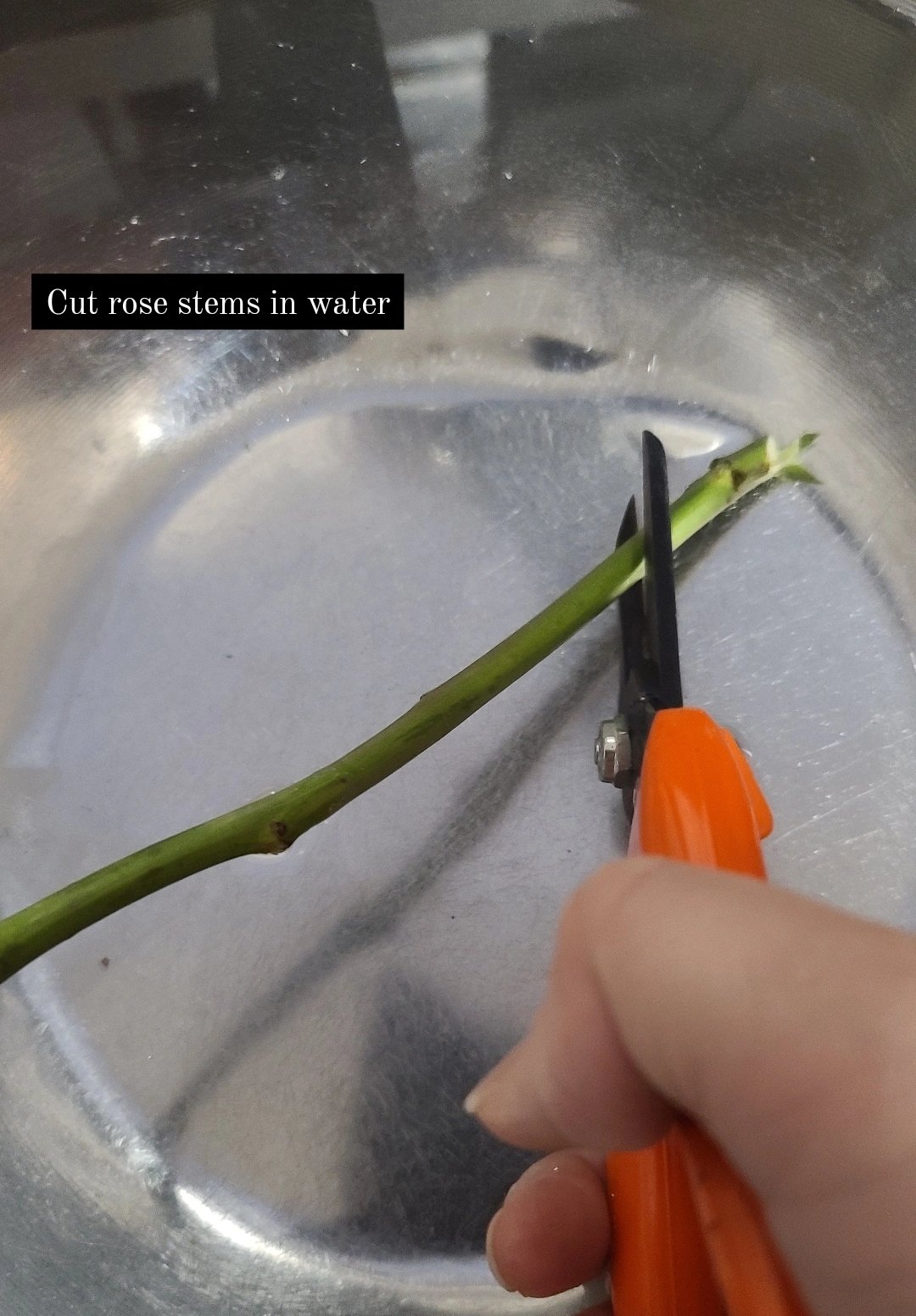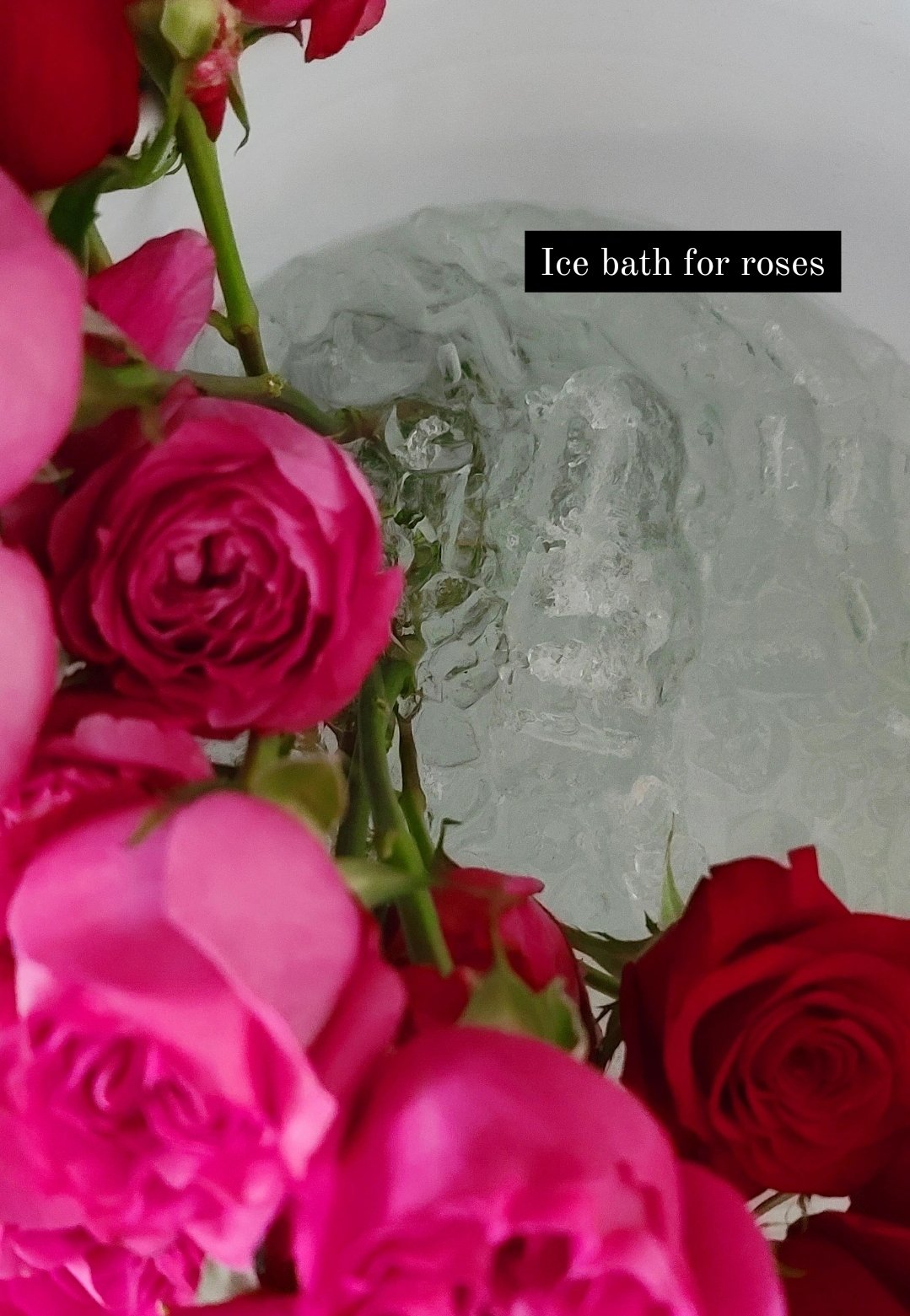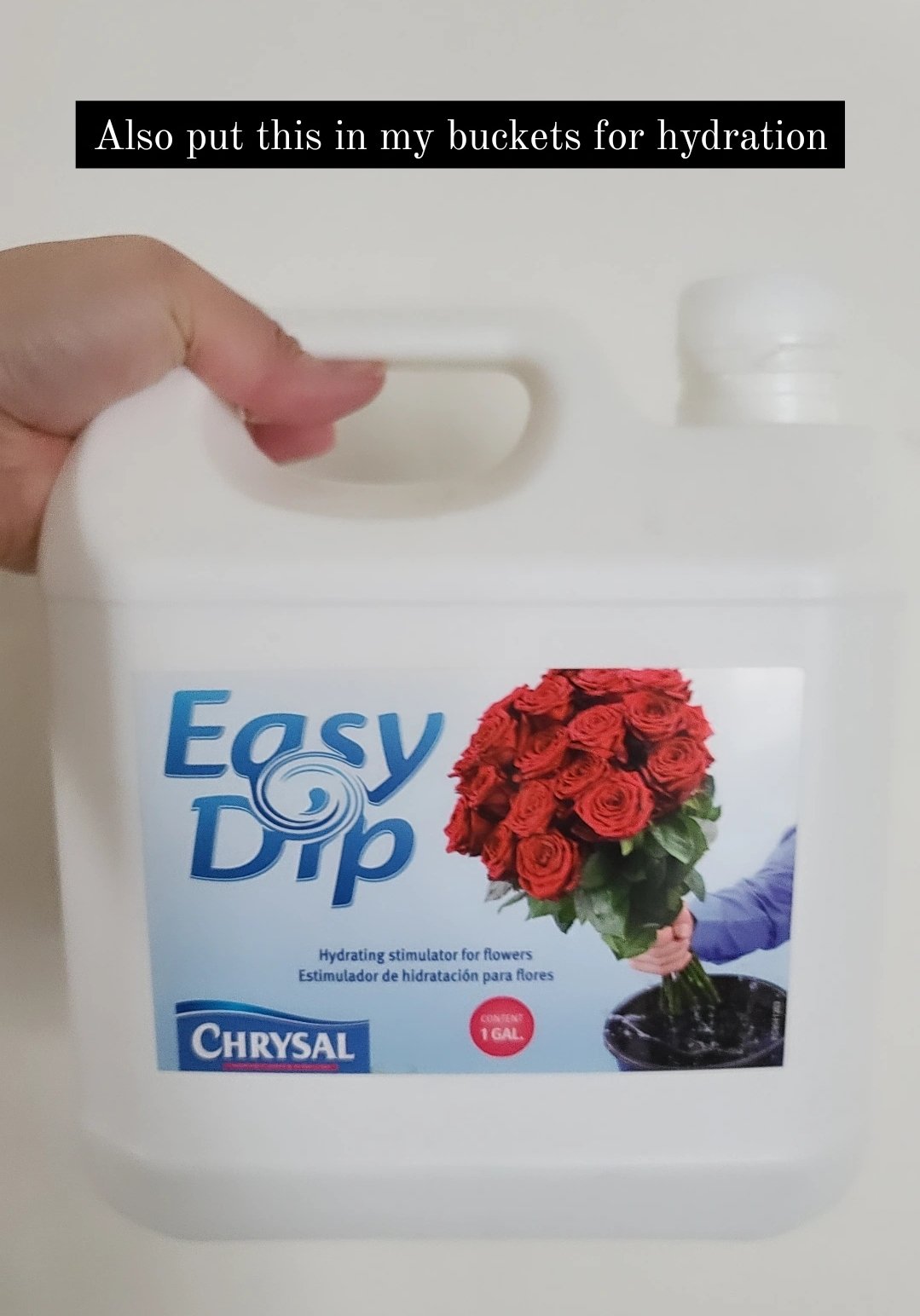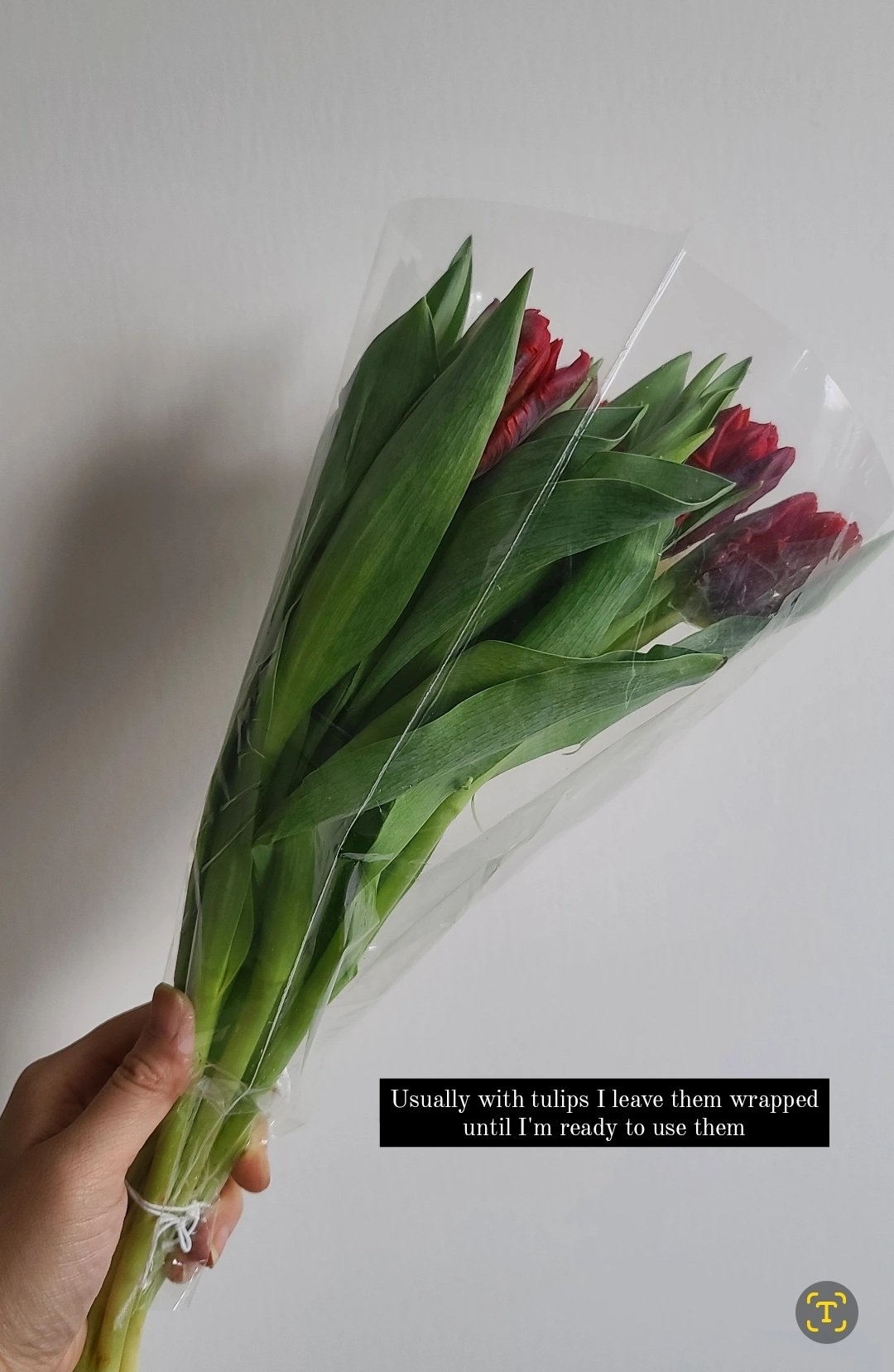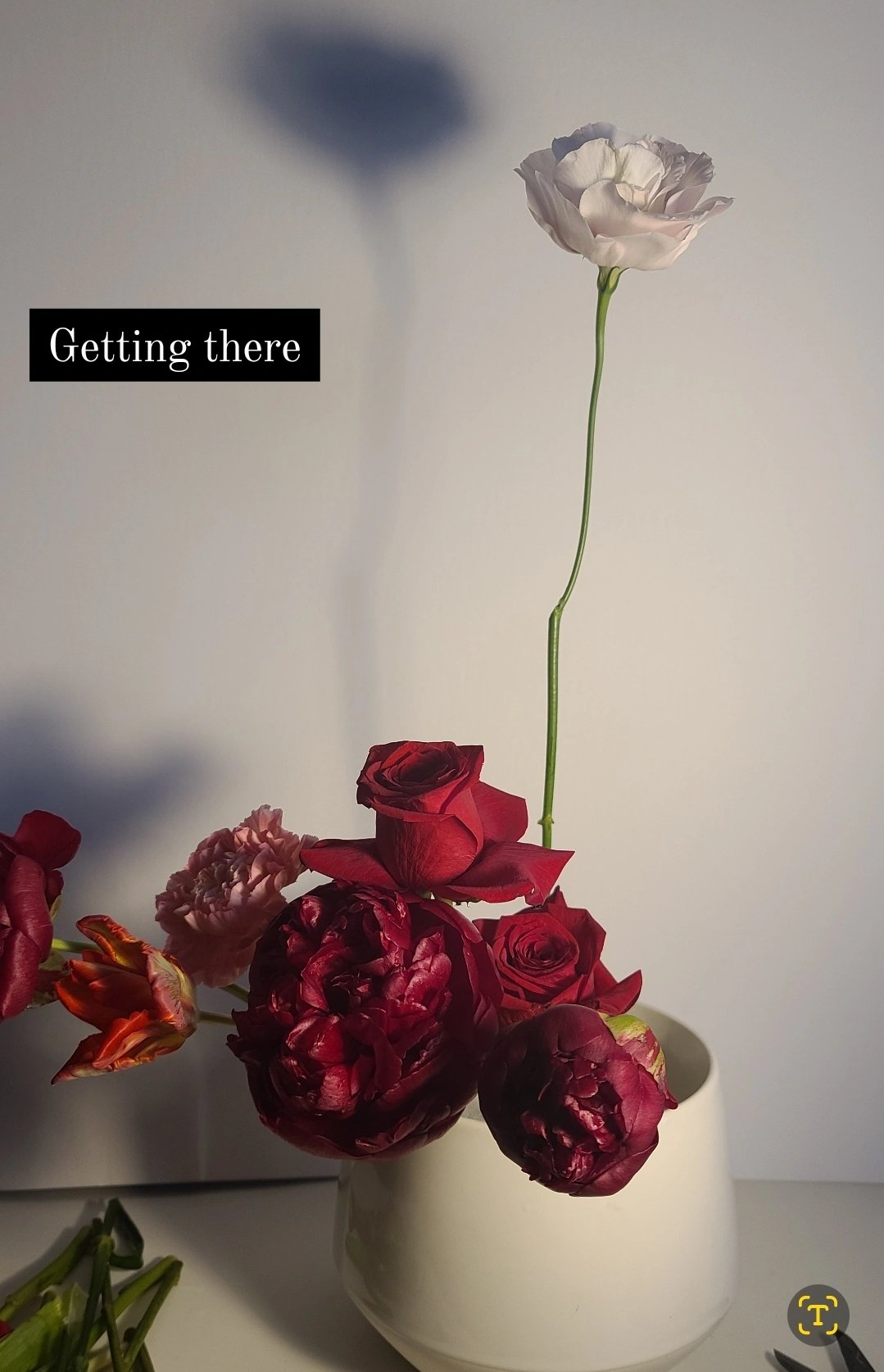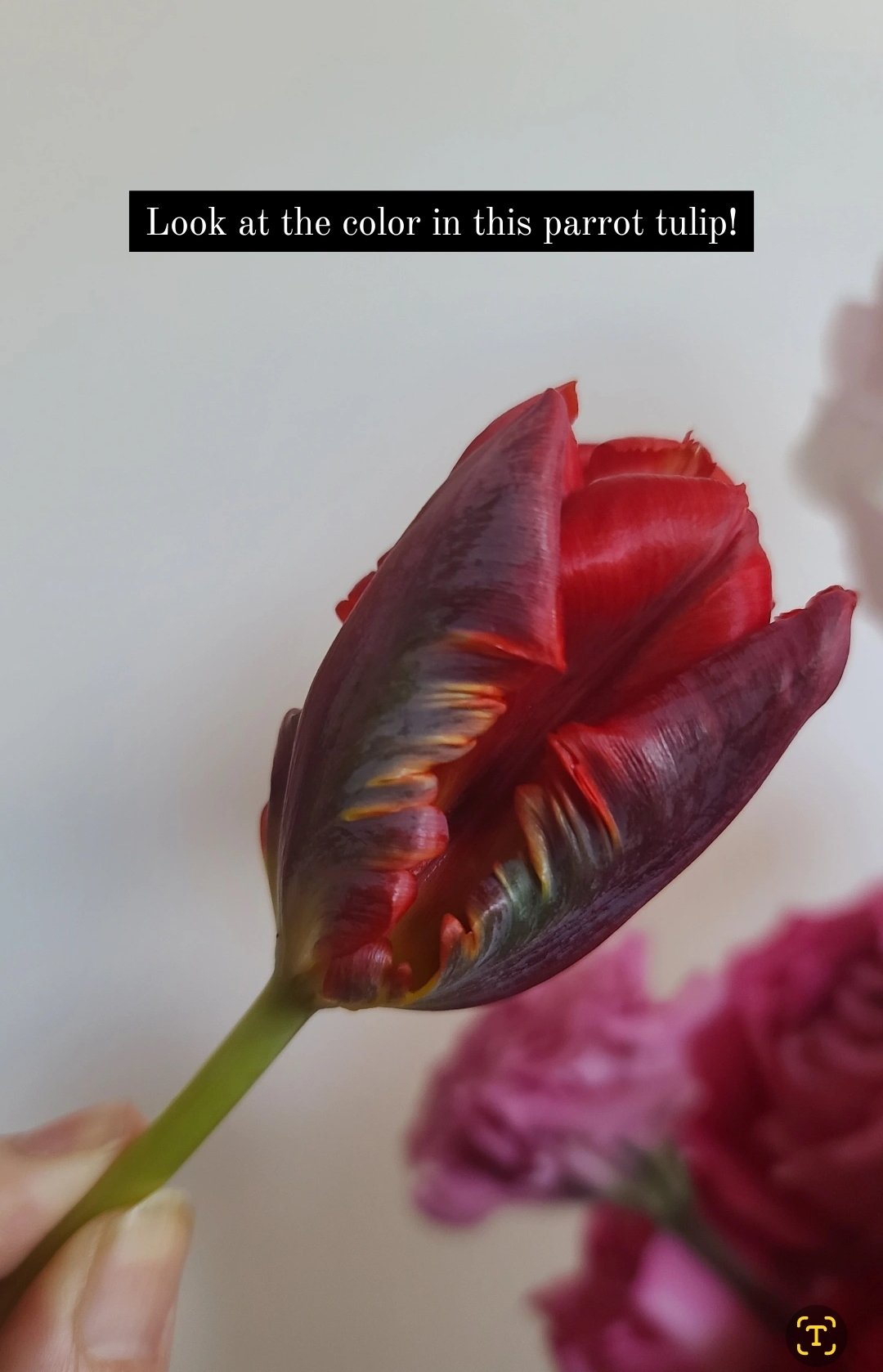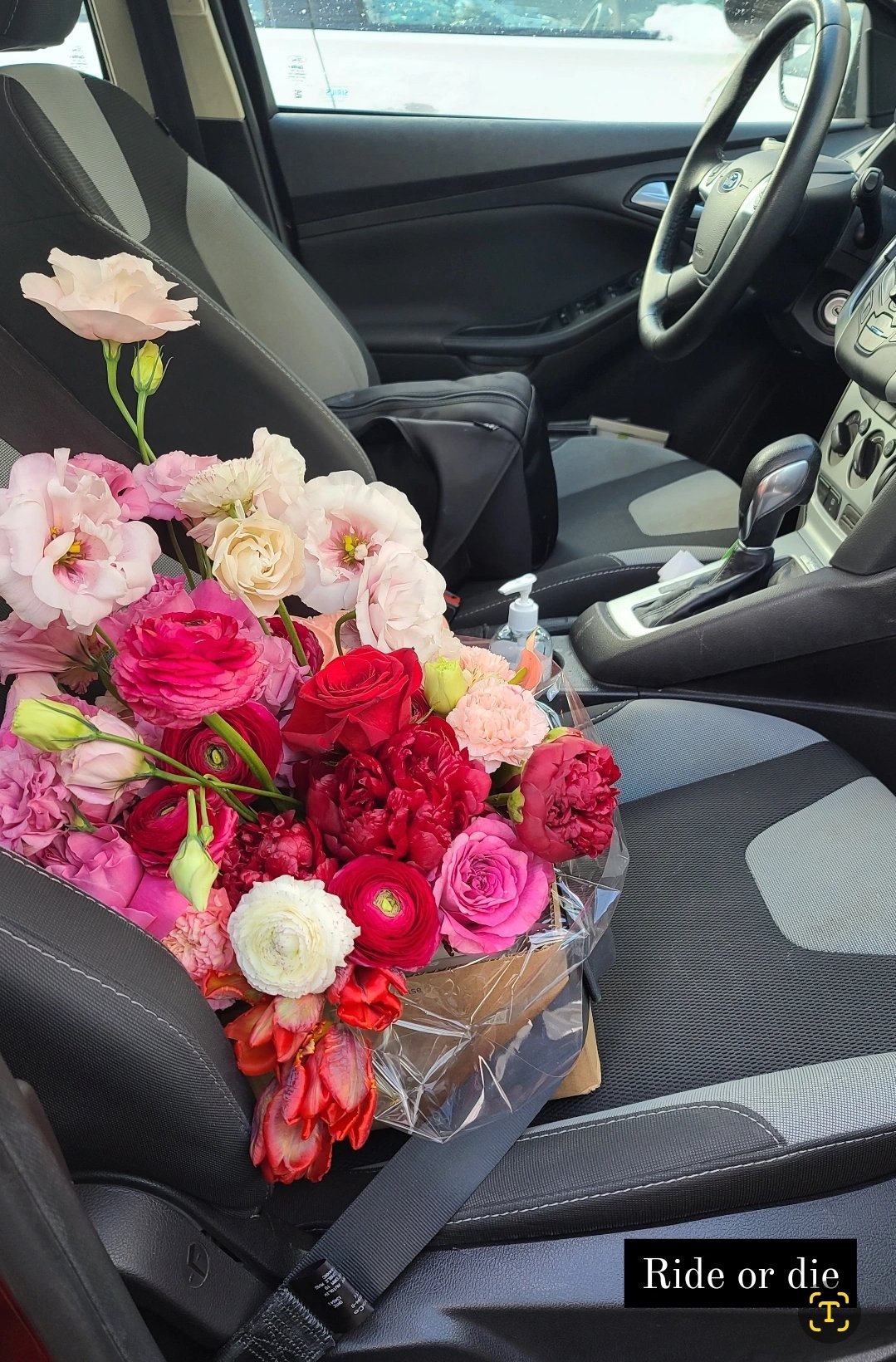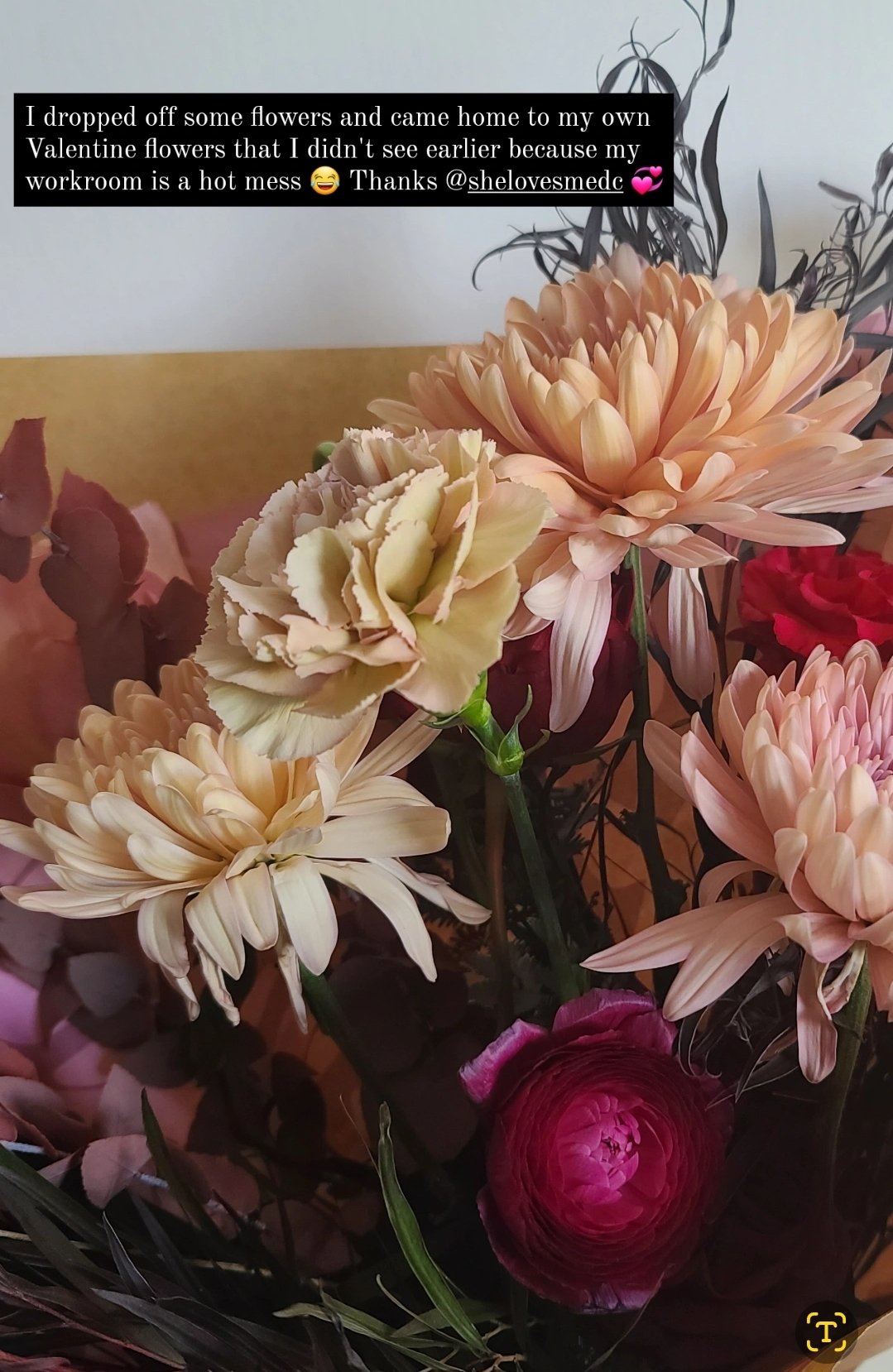Basic Cut Flower Care
Autumnal flower composition inspired by “Where the Wild Things Are” by Maurice Sendak
Everybody loves buying fresh flowers from the farmers markets or flowers from the grocery store, but how do you extend their vase life?
1) Checking flowers. When purchasing flowers, check to see if any look wilted. For roses, press the heads, you should buy roses that have firm heads. If the heads are soft, the roses are older and are about to drop.
For peonies, look for ones that are not open yet and look like marshmallows that are about to open. If the peony buds are too tight like small balls, I wouldn’t recommend buying them because they will take forever to open.
These peonies in the first picture and in the video below look like marshmallows and are ready to purchase.
These “Coral Charm” peonies are still okay to buy, but I would probably purchase them that same day if they look like this.
This “Coral Charm” peony is pretty open. I probably wouldn’t buy it open like this unless I really needed something this open that same day. When I place this size peony in the vase, I would support it by adding other flowers around it so it stays more closed for longer.
2) Transporting flowers. Flowers wilt quicker without a water source especially if it’s hot outside. If you have a few errands to run prior to getting home, see if the seller can place the flowers in water tubes, or even put some water in a plastic flower sleeve, or wrap with a damp towel. Or plan ahead and bring a bucket of water (If you're at Trader Joe's they throw out those black buckets so maybe you can ask if you can have one). The flowers should be fine without a water source for a few hours especially when it’s cold outside (above 36°F), but it’s nice to have a water source. However if it’s hot outside, I would try to get them home as soon as possible.
3) Cutting your stems. Make sure to cut your stems when you get home and place inside a water source like a vase or bucket. Create a vertical slit. For flowers with woody stems (examples are lilac, dogwood, mock orange, clematis vines) as well as hydrangea stems and chrysanthemum stems, be sure to create a vertical slit from the base of the stem versus smashing them. This keeps the vascular tissues intact and allows more surface area for the stem to absorb water.
4) Cleanliness is extremely important. Bacteria accumulation shortens cut flower life. Make sure your vessel is clean, tools are clean. Clean your flower stems. Remove all foliage that will hit below the waterline of your vessel. Leaves rot when submerged which creates bacteria. Peel off any outer rose petals that are bruised or damaged. This will help prevent bacteria from spreading. When cutting flowers clippers are fine if that's all you have but a sharp knife makes cleaner cuts. Sometime clippers can squish the stem too much. Change the water every 2 to 3 days and add food from packet.
5) Temperature and Storage. Higher temps make cut flowers deteriorate quicker. After they’re picked, the flowers will last only for several days. Part of the reason cut flowers wilt much faster is the lack of moisture and exposure to bacteria. Unless you’re trying to make dried flowers, this isn’t what you want.
Instead, you’ll want to place them in a cool area after prepping and placing in a vessel of cool water. I would keep the flowers cool in a cool area, like inside a fridge, for up to 12 hours. Doing this will help slow down the wilting process and retain much of the flowers’ moisture, keeping them vibrant and crisp. Certain flowers such as zinnias are better stored outside of the fridge.
If you are storing in the fridge, this next step is crucial - Remove fresh fruits and vegetables from the fridge, mainly where you’ll store the flower vase. If you can’t totally remove them, place them in a separate compartment away from the flowers. Some fruits, like bananas and apples, tend to release high levels of ethylene. This gas speeds up ethylene production in neighbouring flowers, thus resulting in a faster rate of ageing or withering. For smaller fridges, it’s recommended to place the fruits temporarily in airtight containers. As a precaution, store them in a different location in the freezer.
Change the fridge temperature and set it between 34 to 40°F. Place the flower vase neatly inside the vegetable compartment and let them sit for about 3 to 12 hours, or overnight.
To avoid stray flowers or stems, you may bunch up your flowers and tie them loosely with a string before placing the blooms in the fridge. Clean the compartment beforehand, ensuring there aren’t any stains or liquids that can seep into the petals. For an added precaution, layer a sheet of parchment paper before setting the flowers.
After 12 hours or so, it’s time to make the flower arrangement. Take out the flowers from the fridge. In the evenings you can store the flower arrangement in a cool area in your home, in your fridge again, or outside (temps 36 °F up to 50°F) and bring inside during the day. Keep away from drafts, direct sun.
6) Check the water level each day. The more flower stems are in an arrangement, the more often you need to check the water level especially with flowers like hydrangea. Water should be filled close to the top of the vessel. You can top off with water as needed. What I usually do is pick one side of the arrangement, gently move the stems to make enough room to fill the vessel with water. Tip on reviving wilted hydrangeas: Hydrangeas are fussy flowers and here is a way to revive wilted blooms if it’s only been a few hours they have been wilted. Boil water. While the water is boiling cut the stem at an angle (preferably with a knife). Once the water boils, pour into container and immediately put the stem in the water. Cover the hydrangea with a paper towel to protect from the steam. I let it soak for an hour. Before returning to the original container, I also soaked the blooms in cool water for a few seconds and dried the excess water.
First image: In the morning before leaving for work.
Second image: Later in the evening that same day after work.
Here’s another wilted hydrangea.
Revived the next morning.
7) Food. Since the flowers have no nutrient source once cut, use the floral food packet provided with the flowers. You only need a half of the floral food in the smaller packets and a fourth of the floral food in the larger packets each time you add and change the water. You don’t need the whole packet when you first place the flowers in the water. If you don’t have floral food you can make your own: 2 tbsp lemon juice, 1tbsp sugar, 1/4 tsp bleach for every quart of water. Sugar acts as food. Lemon juice and bleach kill the bacteria. If you purchase flowers from the farmers market, they typically don’t come with floral food so you can either make your own or purchase the FloraLife or Chrysal brand online like on Amazon.
8) Fruits and Vegetables. Have you ever tried to ripen peaches by placing them in a brown paper bag and closing the top? How the peach will ripen is fruit emits ethylene gas which will cause the peach to ripen more quickly. As I mentioned in a previous section, make sure you do not have fruits and vegetables next to your cut flowers. Ethylene gas quickens cut flower life. However this is one area where I sometimes break the rules as for a project I may be using both flowers and fruit together. Like for a tablescape I may have fruit as part of the decoration along with the flowers.
9) Daffodils. All bulb flowers in the narcissus family (e.g. Daffodils, jonquils) are poisonous to other flowers. A milky sap leaks from their stems that pollutes the vase water and causes other flowers to decompose because the sap can clog the stems of other flowers if they are not conditioned properly.
However if you do the following steps, you can arrange daffodils with other flowers:
As will all bulb flowers, the temperature of the conditioning water should be cool and not warm (unless you want the flowers to open quickly).
Use professional floral food for best results and cut the stems at least ½ inch before placing them in a clean container with the cool water and proper amount of floral food (follow manufacturer’s instructions)
Condition the Daffodils for at least SIX hours before arranging them
Do NOT re-cut the stems after conditioning before you put them in the final arrangement or the sap will leak out again and hurt the other flowers
Bulb flowers prefer shallow water; if they are placed in deep water, the stems can get water logged and shrivel up and the petals will get papery
For best results – only mix narcissus flowers with other types of flowers in floral foam arrangements and not in vase arrangements to lessen the chance of the sap getting into the vase water.
If you don’t want to use floral foam, then just arrange the daffodils separately on its own.
10) Additional hydration. If you want to have additional hydration for the flowers, after you are finished with designing the arrangement, spritz the arrangement with FloraLife Crowning Glory or Chrysal Professional Glory spray once designs are complete to keep blooms fresh and hydrated. Floral designers use this product when finishing their designs. This is a ready-to-use spray that provides a clear polymer coating to the flower, stem and foliage. This spray is all about reducing water loss. This protective clear coating effectively reduces water loss on floral arrangements and as well as on products that have limited or no access to water (bouquets, corsages, boutonnieres). FloraLife Finishing Touch is another spray that can be used. It fortifies the finished arrangement to promote flower opening, color development, foliage quality and hydration. It is specifically formulated for use on finished arrangements that are utilized for longer durations and have access to a water source via vase or foam. The active ingredients in FloraLife Finishing Touch are absorbed by the flower petals and leaves, working to fortify the cut flower from the inside out. You can purchase these sprays from a local floral wholesaler or from Amazon.
Do not spray if you are outside and it is cold, close to freezing as you will damage the flowers.
11) Dry flowers. Once the flowers start looking sad, you can dry them if you want. Just place in an empty vase with no water and set aside away from the sun for several weeks. Usually flowers with very saturated colors will keep their color. Lighter color flowers tend to turn brown although a few just fade from their original color (example pink to pale pink).
Dry floral arrangement with ranunculi, roses, hyacinth, campanula.
Drying “Princess Suki” Japanese garden roses
Remember the “Coral Charm” peonies from earlier? Here’s a dried “Coral Charm” peony in the center of this bouquet mixed with fresh flowers.
A Day in the Life of this Flower Arrangement
I end here with this flower arrangement I made for V. “New Order on Steroids.”
Tap to scroll ———>
Happy client.
I received flowers too when I got home.






